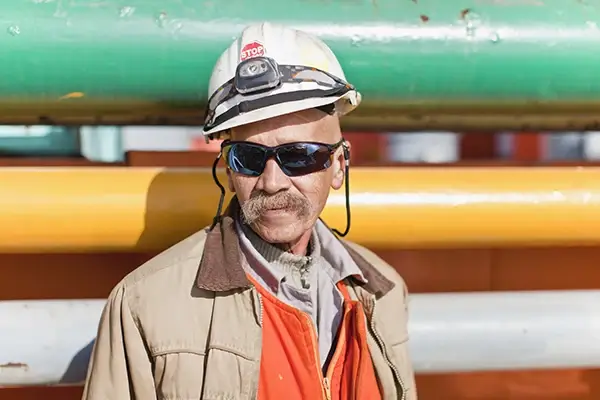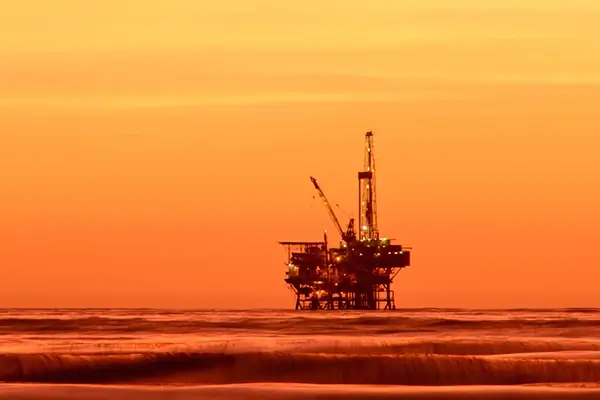Safety remains a cornerstone in the oil and gas industry, where workplace hazards pose significant risks to workers and operations. Ensuring workplace safety is not only a legal requirement but also a moral obligation that safeguards the well-being of employees and the integrity of operations.
Challenges in Oil and Gas Facilities
In the oil and gas sector, workers encounter numerous hazards daily, including exposure to toxic chemicals, high-pressure equipment, and potential fires or explosions. According to the U.S. Bureau of Labor Statistics, the industry consistently ranks among the highest in occupational fatalities, with 602 fatal work injuries recorded in 2019 alone.
Accidents in the Oil and Gas Industry
Working in confined spaces or at heights increases the risk of accidents. In the U.S, 64% of confined space fatalities occur in the construction, manufacturing, and oil and gas industries.
Below are key contributors to fatalities within the oil and gas industry:
Explosions/Fires:
Historically, fires and explosions have been significant hazards in the oil and gas sector. According to the U.S. Chemical Safety Board (CSB), between 2001 and 2018, there were 58 incidents involving fires and explosions in the oil and gas extraction industry, resulting in 215 fatalities and 546 injuries.
Leaks/Spills:
Pipeline leaks and spills have caused environmental damage and financial losses. According to a report by PHMSA, in 2020, the U.S. experienced 286 significant pipeline incidents, causing 11 fatalities, 60 injuries, and over $121 million in property damage.
Slips/Falls:
Incidents related to slips, trips, and falls are common in various industries, including oil and gas. As per the Canadian Centre for Occupational Health and Safety, approximately 42,000 workers sustain injuries due to falls each year, constituting roughly 18% of all workplace injuries in Canada. Among these incidents, 67% are attributed to slips and trips, while 30% are falls from elevated positions.
Equipment Hazard
The Occupational Safety and Health Administration (OSHA) in the United States revealed that three out of five fatalities occurring at oil and gas extraction sites were due to incidents involving being struck by, caught in, or caught between hazards. These hazards encompassed scenarios such as vehicle encounters, high-pressure lines, and falling equipment. Notably, the risk of fatality is higher when employees work alone.
Exposure to Chemical
Workers in the oil and gas sector are susceptible to exposure to hazardous substances. According to OSHA, around 50,000 workers die annually due to exposure to dangerous chemicals.
The NIOSH Oil and Gas Extraction Safety and Health Program highlights potential exposure hazards, particularly during certain operations like hydraulic fracturing. Risks include:
- Mixed exposures to substances like silica, DPM, and VOCs.
- Multiple exposure routes, such as inhalation and ingestion.
- Dermal exposure to hazardous elements like lead, solvents, and PAHs.
- Risks related to exposure transfer outside the workplace.
It’s crucial for teams to rigorously observe safety protocols when handling chemicals to safeguard against these risks.
Confined Hazards
In the oil and gas industry, employees may be required to work in storage tanks, pits, excavated areas, and wellheads. Work in confined spaces is necessary but extremely dangerous. A worker’s life is at risk if the confined space fills with a dangerous substance, caves in, or has an exit blocked. The 3M company found that Canada loses 100 workers in confined spaces annually, half of whom are the would-be rescuers.

Technological Solutions for Safety in Oil and Gas Facilities
Oil and gas facilities mitigate safety risks through stringent safety protocols, regular equipment inspections, and emergency response plans. OSHA reports that workplace fatalities have decreased significantly by over 65% since the inception of safety standards.
Advancements in technology have revolutionized workplace safety. Integration of safety management software and IoT devices has enhanced incident reporting and enabled real-time monitoring. Implementing such technology could reduce workplace injuries by up to 50%.
Field Eagle’s Integration for Oil & Gas Safety
Field Eagle emerges as a pivotal ally, empowering safety and operational efficiency within the demanding landscape of the oil and gas industry. Through its key features, Field Eagle significantly enhances workplace safety and the well-being of oil and gas workers.
People Management
Field Eagle’s People Management Module is a hub for streamlined coordination of oil and gas inspectors and inspections. Efficiently assigning forms, scheduling inspections, and monitoring progress in real-time optimizes inspector productivity, leading to enhanced safety protocols.
Inspector Dashboard
The Inspector Dashboard furnishes quick access to crucial data by providing an insightful snapshot of ongoing and completed inspections. This visual representation facilitates prompt decision-making, vital in swiftly implementing safety measures and preventive actions.
Data Centralization
The platform’s Data Management module consolidates inspection-related data. It ensures seamless data access and management by effectively organizing documents, standards, regulatory bodies, and inspection items. This centralized data repository simplifies retrieval, improving safety assessment and decision-making.
GEO Tagging
Location Awareness and Visual Evidence: GEO Tagging captures the location information of photos taken during inspections. This feature provides visual proof of inspectors’ on-site presence, enhances location awareness, and facilitates effective asset management. It lets clients see when and where inspections were conducted, fostering transparency and trust.
Rapid Reporting
Field Eagle’s Instant Reporting feature expedites the report generation process. It allows filled-out forms to be swiftly submitted, reviewed, and accessed within seconds. This eliminates delays in accessing crucial inspection reports, enabling rapid responses to safety concerns and enhancing overall safety measures.
Learn more: Field Eagle Feature
Conclusion
Securing oil and gas facility operations demands a continuous commitment to safety. Prioritizing safety not only protects workers from harm but also ensures the sustainability and success of operations. Embracing technological advancements, fostering a security culture, and investing in robust safety measures are essential to creating a safer workplace.
Ensuring safety in oil and gas facilities isn’t just about compliance but valuing human lives and creating a secure environment for all. Field Eagle, with its array of sophisticated features, is a robust solution tailored to elevate oil and gas industry safety standards. It streamlines operations and champions safety by providing efficient tools for inspections, data management, and prompt reporting, contributing significantly to a safer working environment.
Request a Free Demo Today





